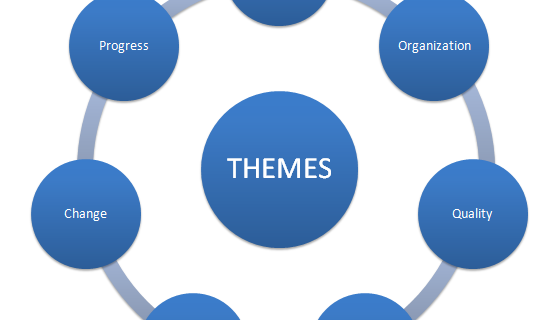
Having discussed the seven principles of PRINCE2, and the seven roles in PRINCE2, it’s now time to introduce the seven themes of PRINCE2.
In this article, you’ll read an overview of these themes, and discover what they aim to do as a package.
Why does PRINCE2 have themes?
As we’ve seen in earlier articles, PRINCE2 provides a governance framework with a clearly defined strategy and goals to determine how the project is managed. Because it is generic, PRINCE2 methodologies are applicable to all types of project. For example:
- The seven roles in PRINCE2 lay out a framework for who does what, and the responsibilities of each PRINCE2 role.
- The seven principles of PRINCE2 set out the functional approach to the processes employed in PRINCE2 projects.
To ensure that its principles are properly practised, PRINCE2 incorporates seven themes. These could be thought of as seven distinct areas of knowledge. They are set up at the start of a project, and monitored throughout to ensure that project delivery is kept on track. The PRINCE2 themes are:
1. The business case
This is related to the principle of continued business justification. This theme addresses the question of whether the project is viable, and whether it can be achieved.
2. Organisation
This theme is related to the principle stating that roles and responsibilities must be defined. Everyone’s roles must be put on record, and their individual (and collective) responsibilities noted.
3. Quality
This theme is related to the principle that focus must be on quality and products. This is an important concept – quality can be a subjective concept, and so it is important to define what quality means at the outset.
4. Plans
Plans describe how targets will be delivered. This focuses on products, timescales, costs, quality, and user benefits.
5. Risks
It is necessary to identify, assess and control risks during the project lifetime. There are different types of risk: negative risks are termed as ‘threats’, and positive risks are deemed to be opportunities.
6. Change
In most projects, there will be needs for change. The change theme determines how change requests during the project are handled. This doesn’t mean change requests should summarily be dismissed, but rather they should be agreed before they are executed.
7. Progress
The theme of progress is about monitoring and measuring progress. Project managers are afforded the responsibility of check and control where it is relative to the plan. If a project is not tracked, it can quickly be derailed without the project manager having any knowledge of the impending outcome.
Themes are continuous in PRINCE2
To be effective, PRINCE2 themes must be continually asserted throughout a project’s lifetime. Each theme is embedded into the seven processes of PRINCE2, adding robustness to its methodologies – processes run in a chronological order, while the themes are ever present.
In our next blog, we’ll start to examine the PRINCE2 themes in more detail. In the meantime, don’t hesitate to contact us:

